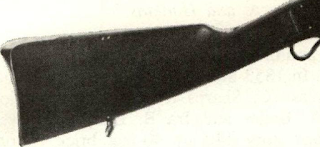Christian Sharps’ personal career had separated from
Using a rimfire metallic cartridge, they were breechloading single shots, in which the frame extended far
Wesson small revolvers, made such an arm but in percussion, not cartridge, form. Otherwise it looks much
Sometime in the summer of , as Holt and
Four basic Sharps & Hankins long guns have been
The S & H Rifle had a 32Vi-inch round barrel,
The “improved” Sharps & Hankins is improperly
These make three basic Sharps & Hankins guns,
Using a rimfire metallic cartridge, they were breechloading single shots, in which the frame extended far
 |
| The Walch-Lindsay pistols described on page 283. The .36 |
Wesson small revolvers, made such an arm but in percussion, not cartridge, form. Otherwise it looks much
Sometime in the summer of , as Holt and
Ordnance Office, War Department
Gentlemen: Your letter of the 12th instant is received.
into the bore in these of 55 or 60 grains) prepared for a ball
Respectfully &c.,
George D. Ramsay,
Brigadier General, Chief of Ordnance
Philadelphia, Pennsylvania
The projectile shown is a long .44 bullet having an Four basic Sharps & Hankins long guns have been
The S & H Rifle had a 32Vi-inch round barrel,
The “improved” Sharps & Hankins is improperly
These make three basic Sharps & Hankins guns,





Comments
Post a Comment